George Rickey’s metal forms caught the light and shifted in the wind. By that summer, he had shown them worldwide from Osaka to Berlin. In 1978, Maxwell Davidson met George Rickey for the first time at Rickey’s studio in East Chatham, N.Y.
Davidson had opened his New York gallery 10 years before, and that summer, Rickey showed his work close to home — Chesterwood, the historic house and studio of Daniel Chester French, the sculptor of the Lincoln Memorial, hosted its first contemporary sculpture show with regional artists and brought in two of Rickey’s works.
When Davidson first saw George Rickey’s forms in glinting etched aluminum, the Berkshires and New York State were growing a core of kinetic sculpture. In the country of old mills and cheap studio space, art and industry, beauty and engineering were overlapping, as some of the country’s foremost sculptors set up shop here — Alexander Calder, David Smith, Ellsworth Kelly.
The roots are still here, and some have struck shoots. This summer and fall, in Rickey’s honor, Chesterwood and the Maxwell Davidson Gallery are working together for the first time. Maxwell and his son, Charles Davidson, have curated Chesterwood’s 40th-anniversary contemporary summer show: a dozen works of kinetic sculpture in aluminum and steel by some of the best-known sculptors in the field. And several of them have Berkshire ties.
Pedro S. de Movellán, one of the best-known kinetic sculptors in the world today, lives and works a few miles away in West Stockbridge. His aluminum and steel loops in turquoise and lime swivel on machine-grade bearings on French’s lawn.
“He makes everything himself,” Maxwell says. “He could build a car in his studio. I’ve never seen so many lathes.”
The Davidsons feel Rickey’s influence in his work. Son of an architect and an abstract painter, de Movellán started working in college, says Charles, who has co-written a book about him. de Movellán considered engineering, he says, and turned to art as a sophomore at UMass.
“No one else today makes sculpture in the range he does,” Charles said, indoor work in wood and metal, abalone and mother-of-pearl … A boat-builder and woodworker, de Movellán has made furniture and learned clockwork mechanisms. His early work often used wood and magnets, but as he turned toward outdoor kinetic sculpture he turned toward aluminum and steel.
For a sculpture to move freely outdoors, Charles explains, it has to stand up to changes in temperature and humidity without losing its delicate balance. Even hardwoods that can stand up to the weather will respond to it, swelling in the heat and shrinking in the cold, and they may warp or tilt in time.
In his outdoor work, de Movellán often uses steel and automotive paint in David Smith’s style, with his own sense of color and shape.
Rickey also felt Smith’s influence, Maxwell says, and Calder’s as well. He came to his artistic career and his East Chatham studio later in life, with an engineering bent. His rectangles and trapezoids drift in a light breeze, turning at an angle to each other and drawing planes and cones in the air. He set them in what he called eccentric motion, Charles says — they look as though they will collide, but they never do.
Matthew and Phoebe Bender, who live in the Albany area, have lent Rectangle and Square, Unfolding, Gyratory for the Chesterwood show; it has stood for years on their own lawn, they said, revolving quietly through the seasons, meeting wild turkeys and snow.
Phoebe remembers George sitting and looking at it there. He told her, “you’re looking at the piece. I look at the shadow.”
The shadows of right angles move on the grass, and light catches on the polished surfaces. Rickey ground metal sheets with an emery wheel, Maxwell says. It etched the surface like brush strokes, and the textures shine.
His first piece stands near French’s garden, and his second below the studio, framing the mountains across the way. Often the artists chose the sites, says Donna Hassler, director of Chesterwood. For those no longer living, she and Charles walked the grounds, talking over settings and the size of the works. They have kept the works close to the house and studio, in open spaces, where the breeze can move them.
Many of the works lift, spin and rotate. But some are stabiles, balanced but not freely moving. One of the most recognized sculptors in the show has a stationary work — Alexander Calder appears with a mid-sized maquette (model) for Crossed Blades.
Many of Calder’s outdoor pieces keep still, Charles said; his indoor works rely on a catenary system of overhead wires and pieces hanging from each other, and his system would not stand up to the elements outdoors. He compared the solid arch of his work and the whimsey of his indoor mobiles to Rickey’s freely orbiting shapes.
Rickey himself could have done so too. Though Calder did not appear in the first Chesterwood show, he and Rickey knew each other’s work, and Calder, too, once set his feet in the Berkshires. He lived for a time in Richmond, Mass., close by East Chatham, where his parents had a house on Swamp Road. (The Berkshire Museum included him in a regional show in the 1930s and bought two of his early works in 1931, maybe the first of his works bought by a museum.)
So this genealogy of sculptors has grown. While David Smith was working in a factory in Schenectady and turning scrap metal into sculpture in his hayfield, Calder and Rickey and others were developing this new form, and laying the groundwork for the forms that have developed today. And they stand on these lawns on hot afternoons, around French’s studio and his marble busts — massive metal abstract shapes that feel as heavy as anchor chain and yet light enough to move at a touch.

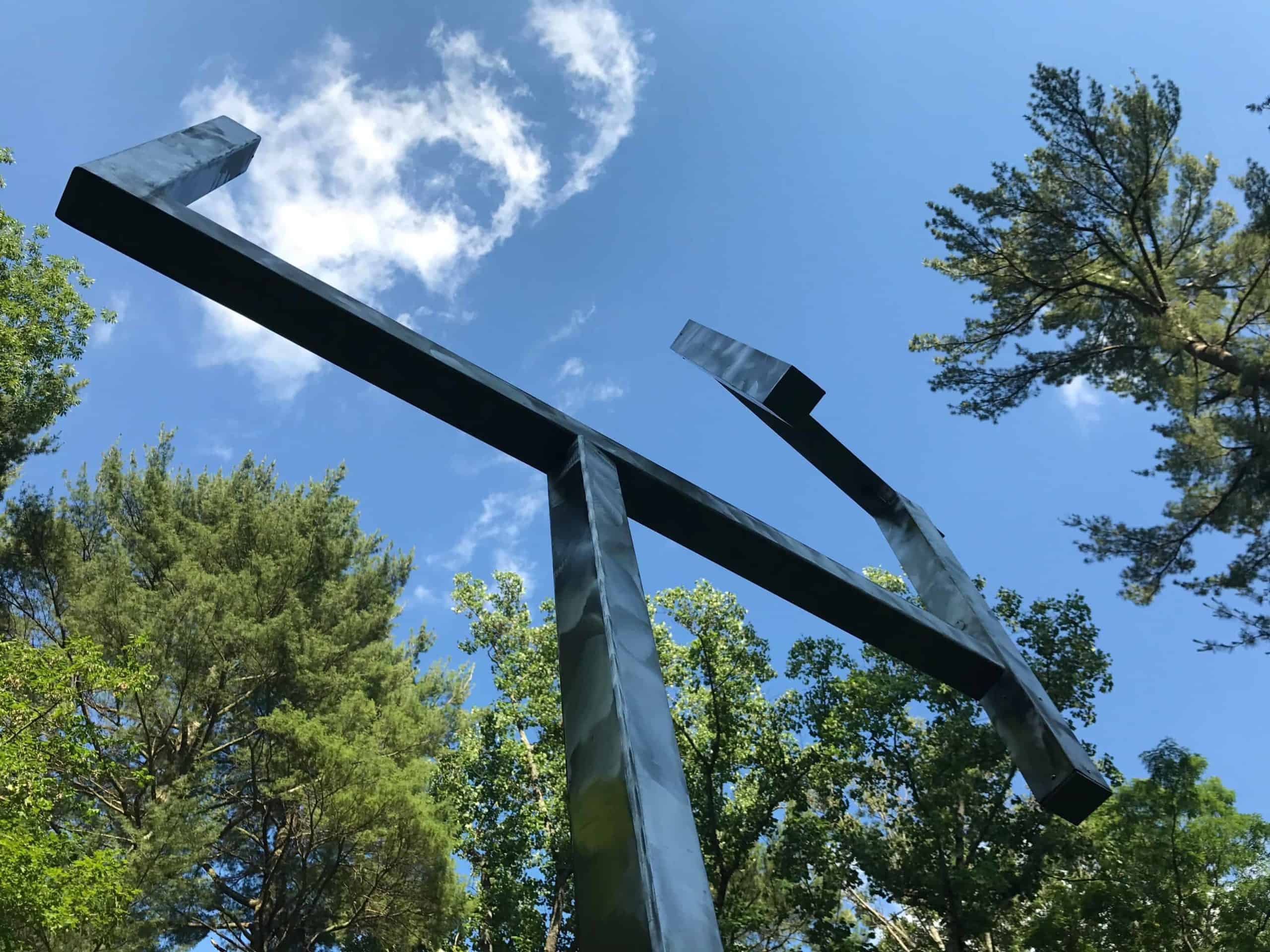
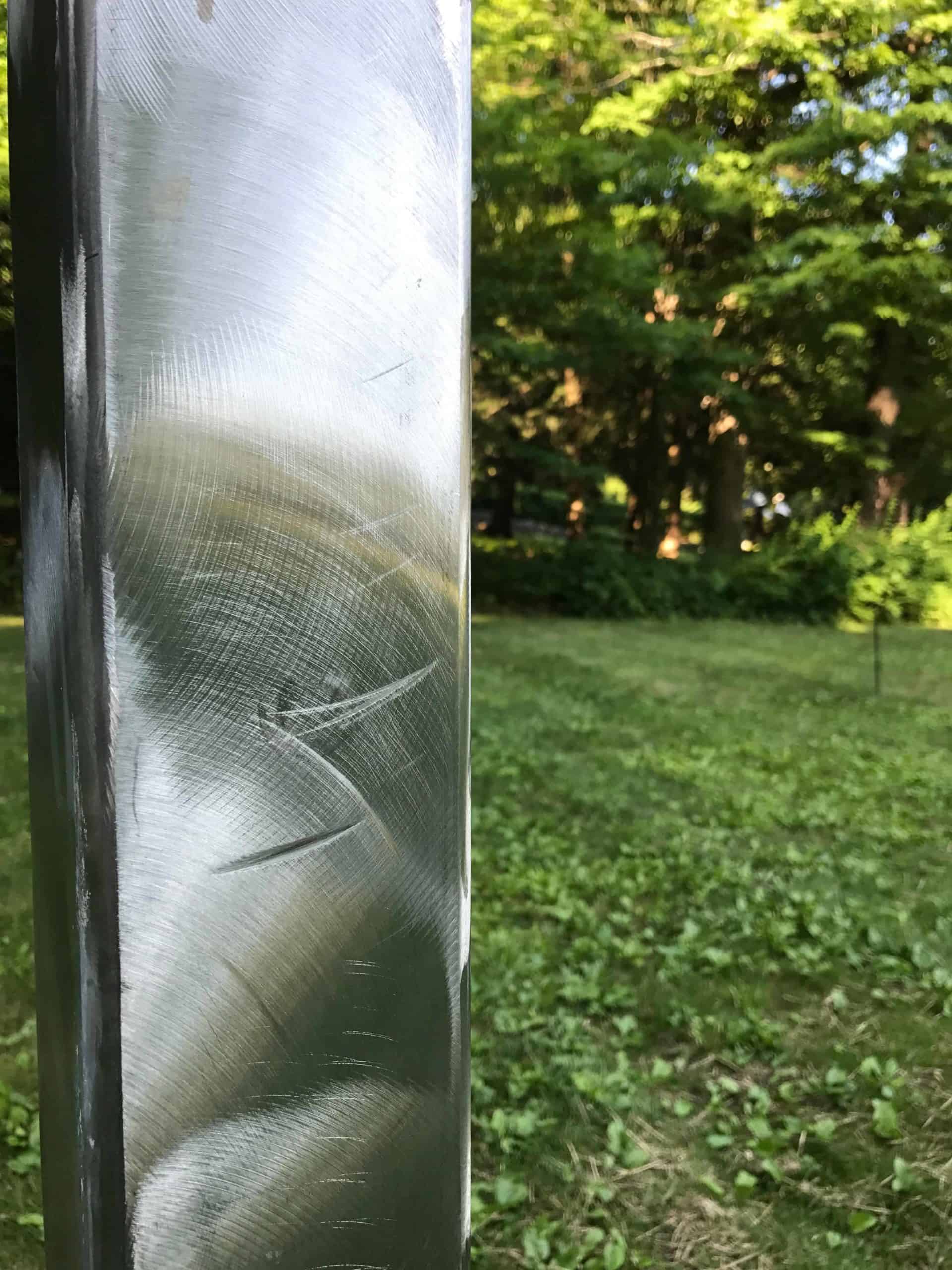
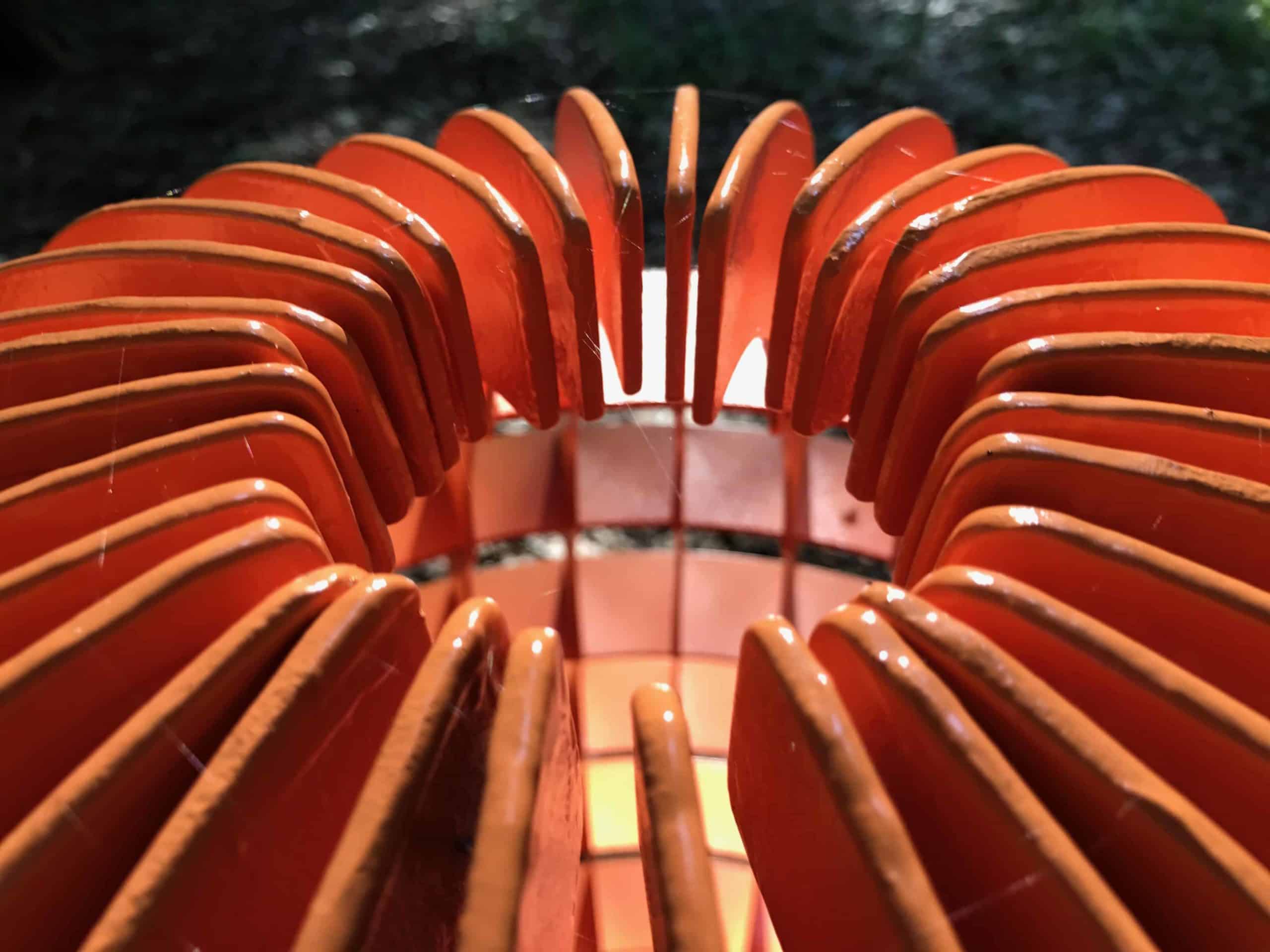

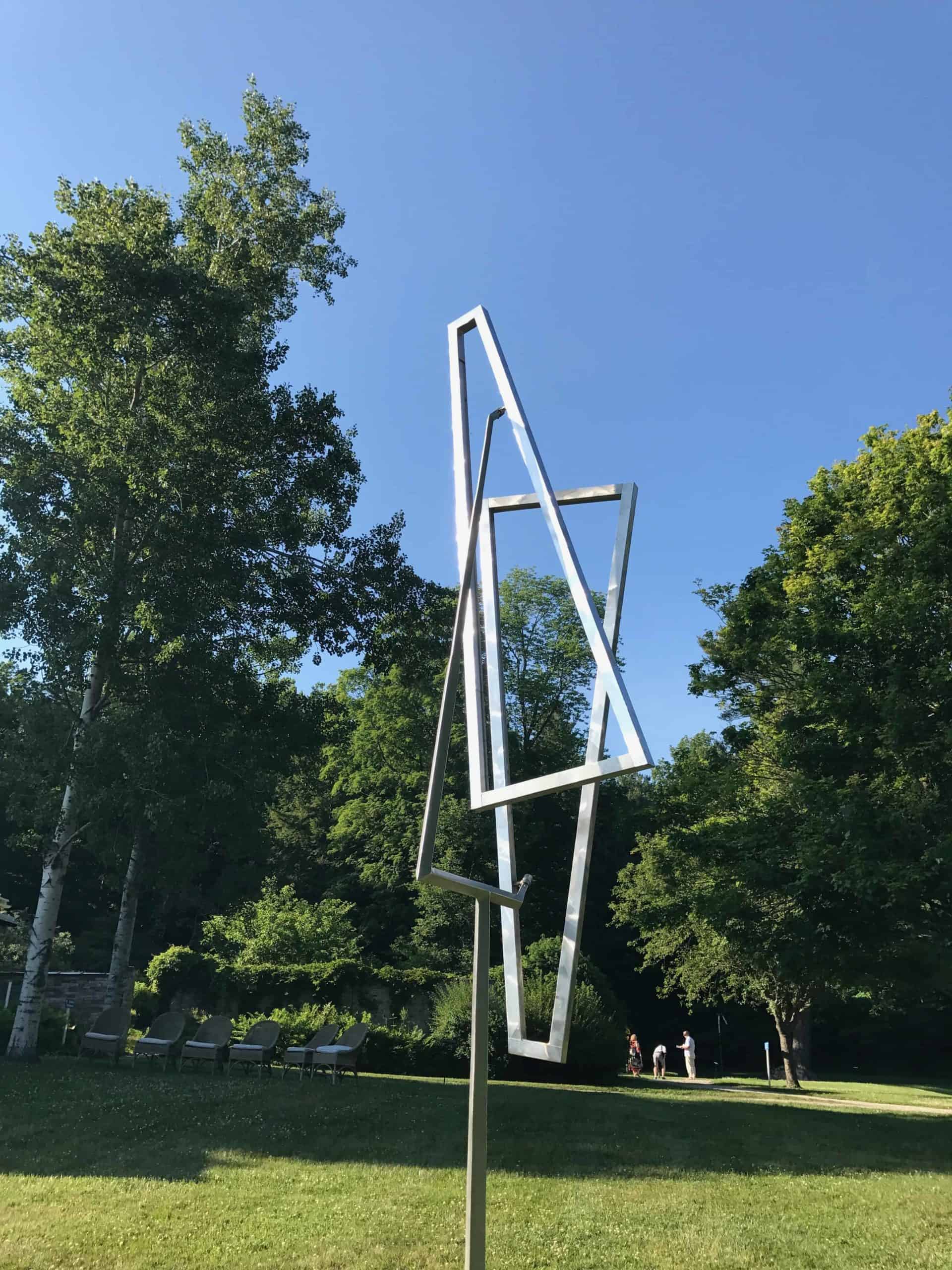
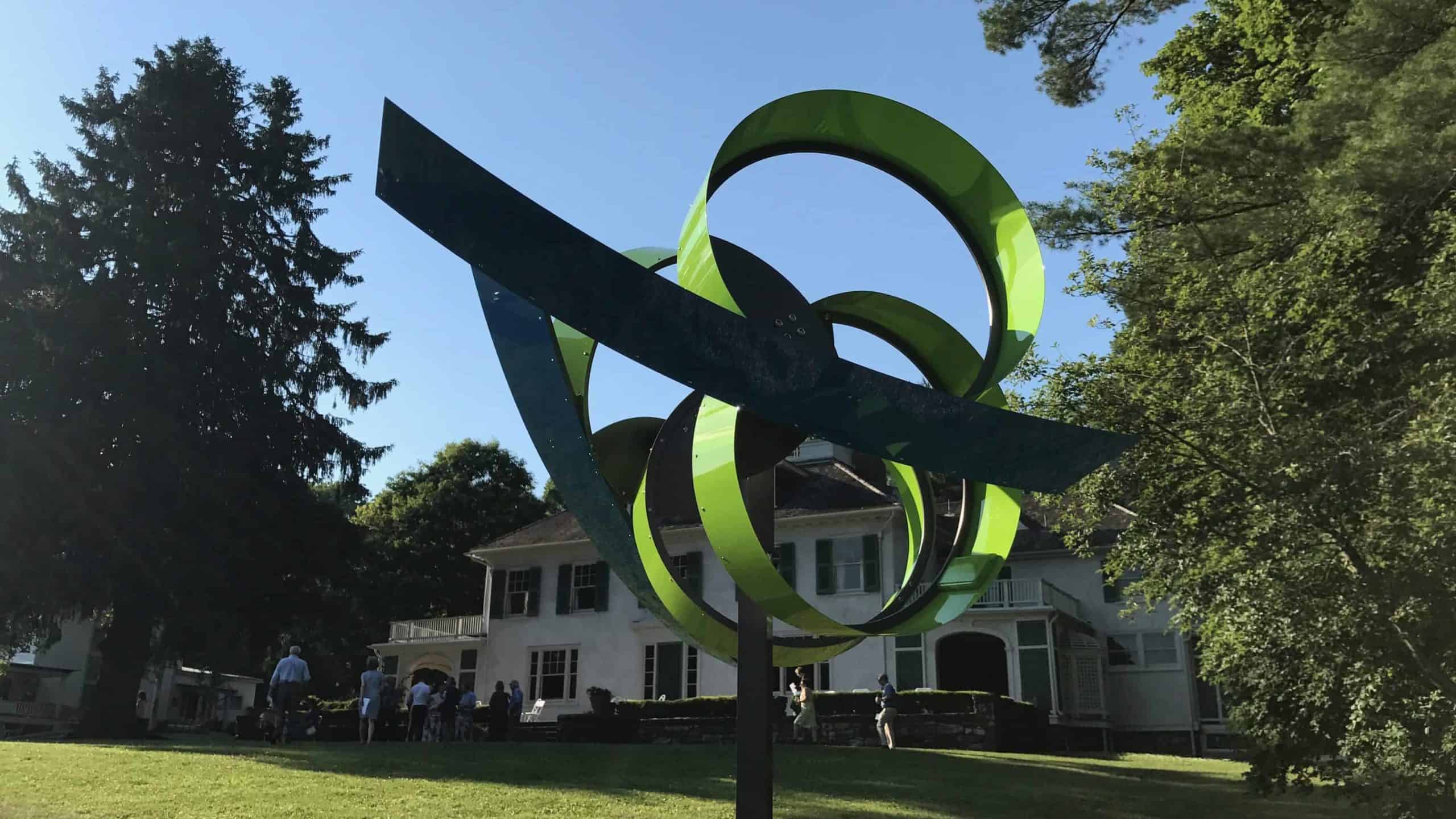
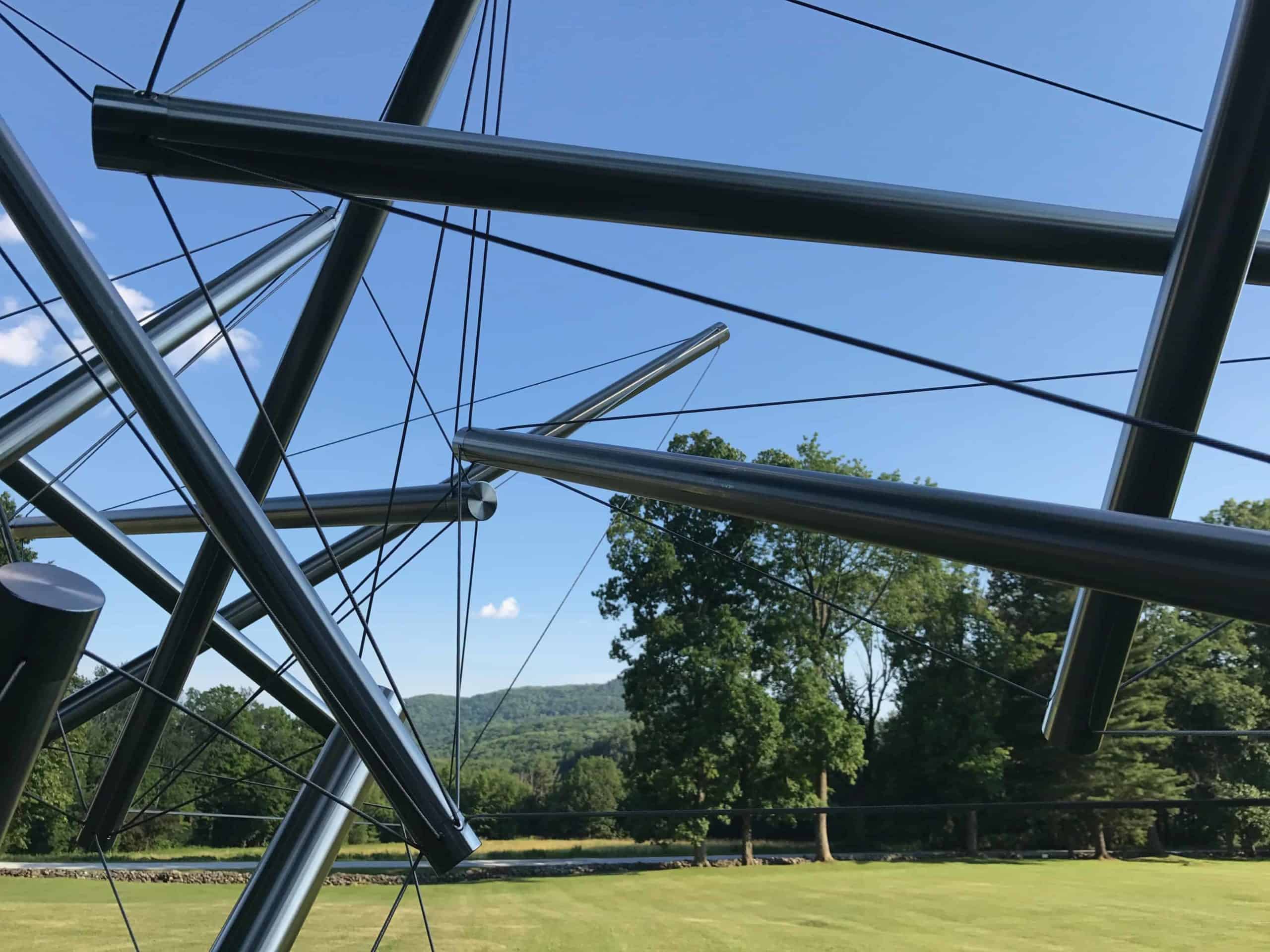
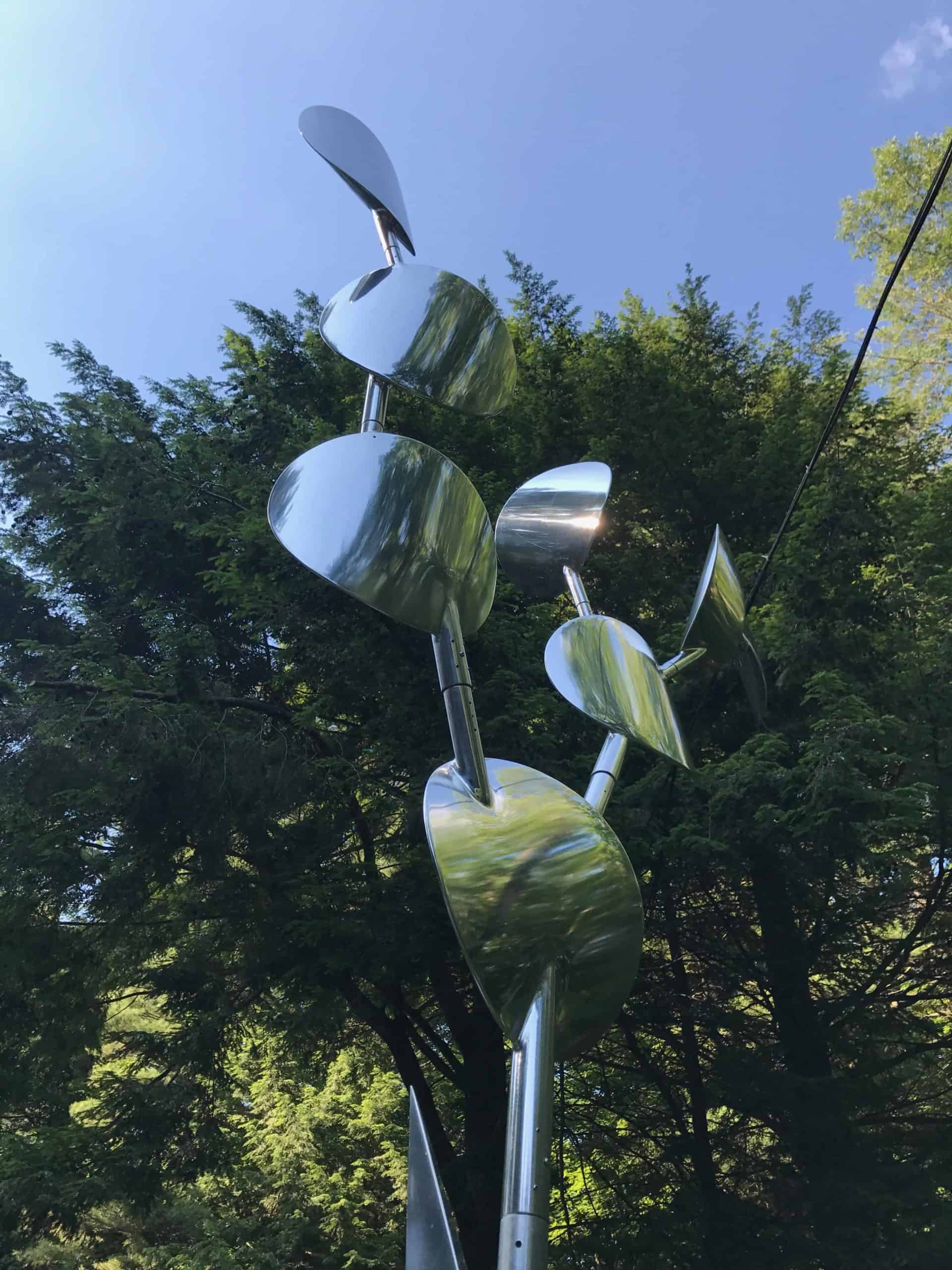
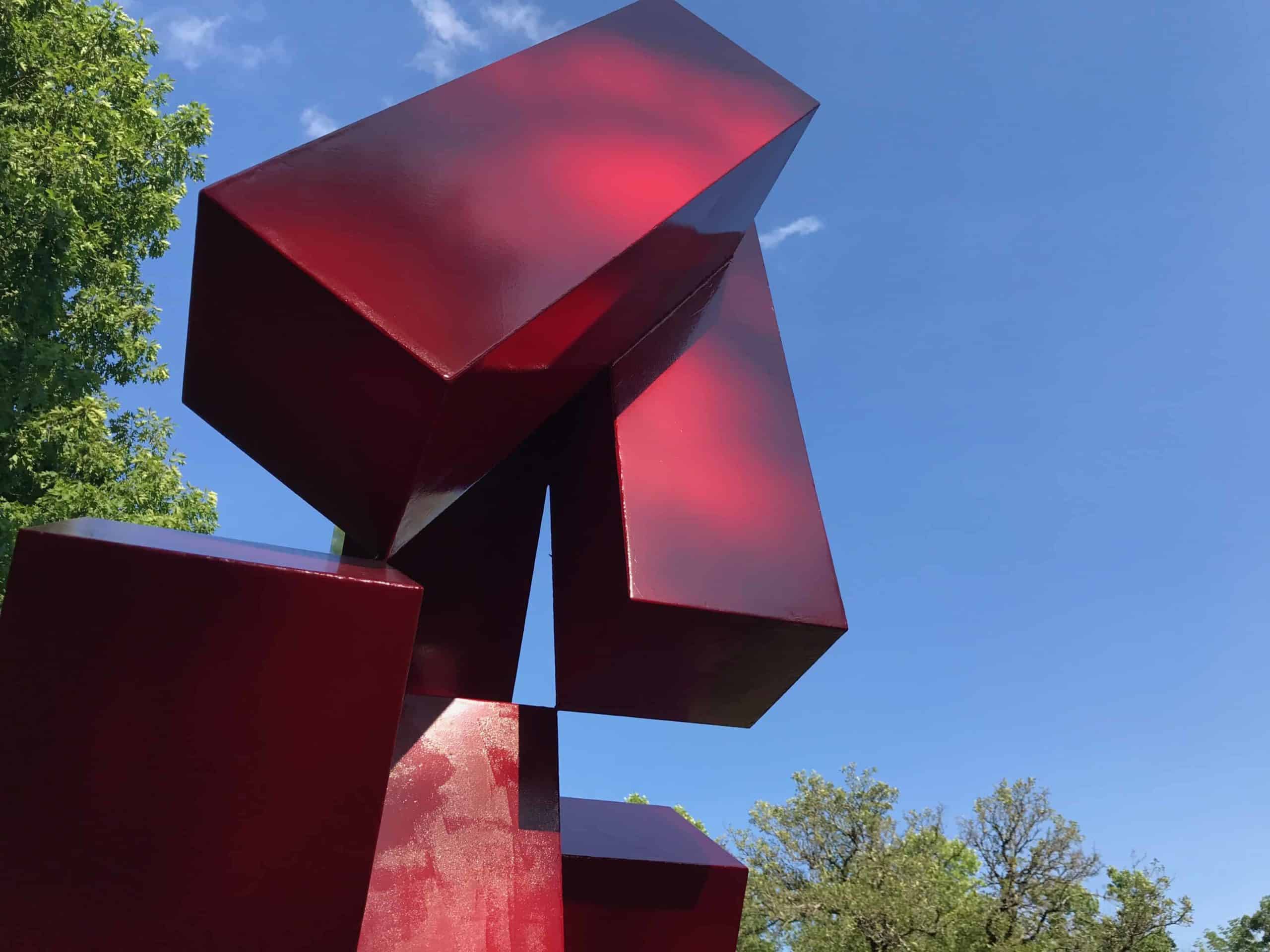
Image at the top: George Rickey kinetic sculpture at Chesterwood, summer 2018, photo by Kate Abbott. This story first ran in Berkshire Magazine in August 2018; my thanks to Anastasia Stanmeyer.

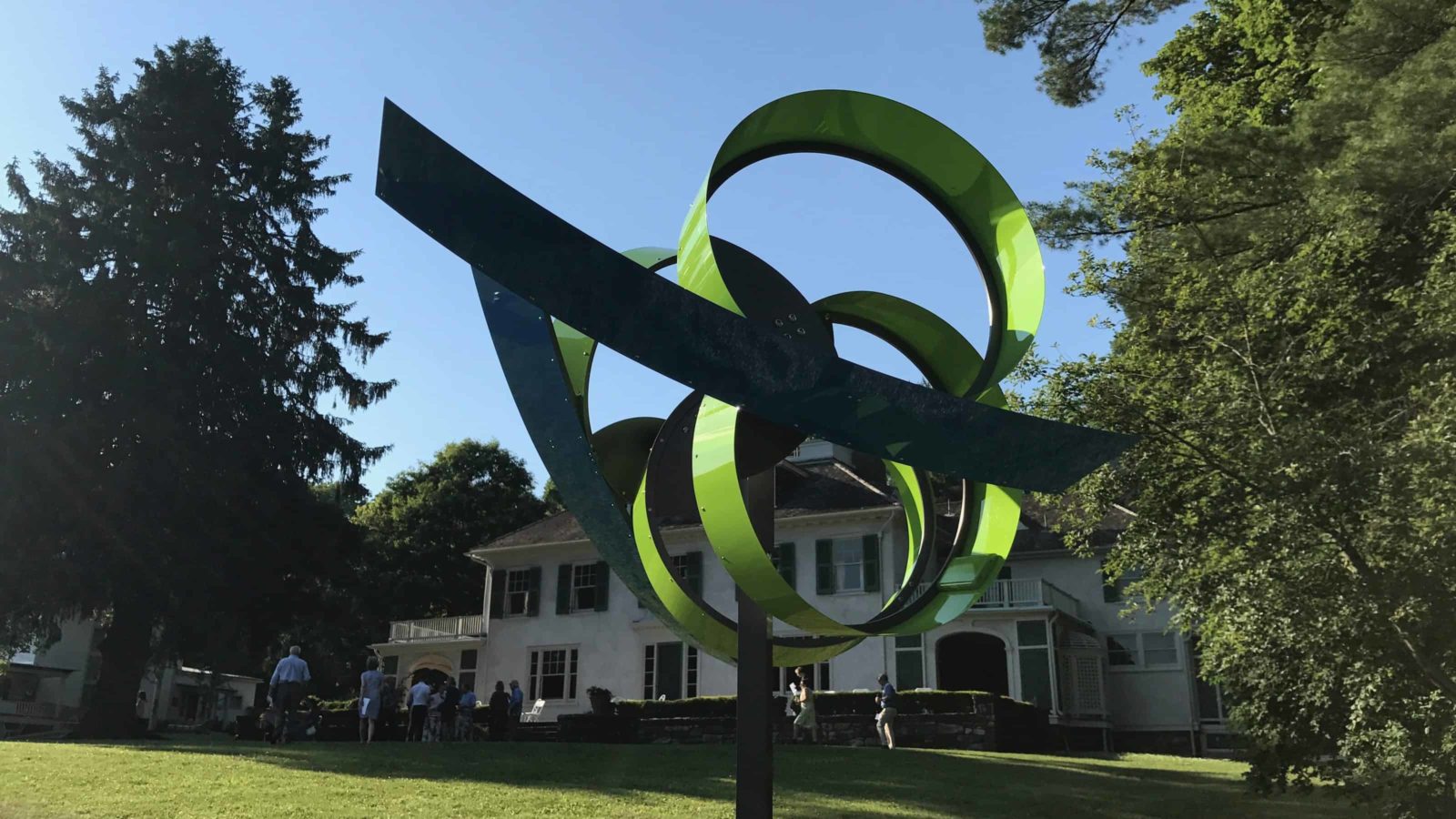
San Diego Kinetic sculptor ,I will be visiting the Berkshires in mid April. Visiting some of my collectors and other artists . Are there any current show I should visitwhie on the East Coast.
Hi Amos, welcome to the Berkshires! I’ve been checking out contemporary Tibetan art at the Williams College Museum of Art, Nora Krug’s graphic memoirs at the Norman Rockwell Museum and Paul Goesch’s visionary architecture at the Clark Art Institute, and I’m looking forward to checking out Mass MoCA’s new To see one’s self at a distance — and enjoying EJ Hill’s rollercoaster. I hear good things about Laurie Anderson’s newest work there as well …